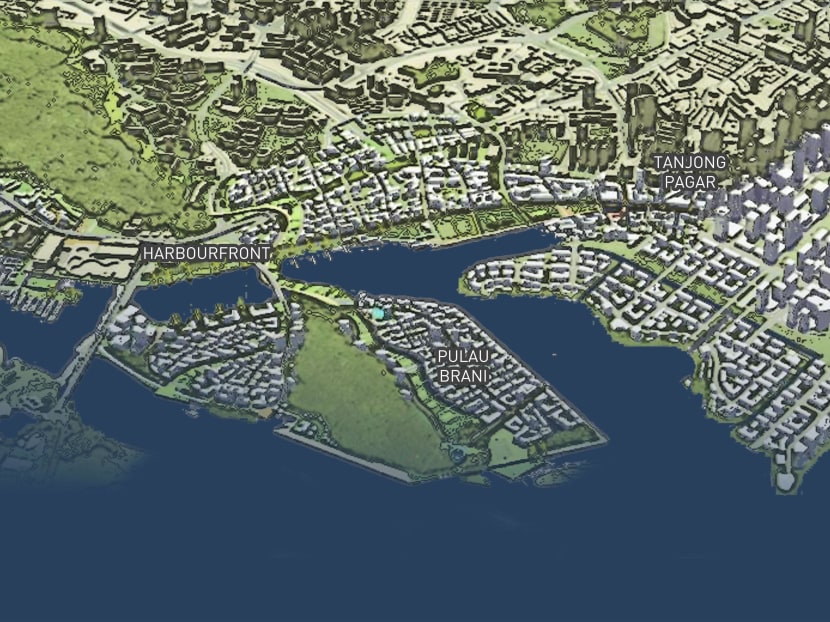Waterfront provides recreation space, helps with water needs
SINGAPORE — The idea of building a reservoir at the Greater Southern Waterfront caught the eye of urban planners and experts, who felt the proposal could provide a new recreational space and additional water-catchment area.
SINGAPORE — The idea of building a reservoir at the Greater Southern Waterfront caught the eye of urban planners and experts, who felt the proposal could provide a new recreational space and additional water-catchment area.
Planners and experts described the Urban Redevelopment Authority’s (URA) Draft Master Plan as grand and comprehensive, but evolutionary rather than revolutionary.
But most were taken by the plans for the waterfront, which has an area about three times the size of Marina Bay.
The URA unveiled yesterday six preliminary conceptual plans for the waterfront, which includes a 30km stretch of waterfront promenade that extends from Labrador Park to Marina South, and encompasses Pulau Brani, a new reservoir created between the offshore island and Tanjong Pagar, and new residential and commercial districts along the coastline.
Associate Professor Ng Wai Keen, Programme Director at the National University of Singapore’s Urban Planning Programme, sees the Greater Southern Waterfront as crucial to Singapore’s growth, with intensified development in the area allowing for preservation of other pockets of greenery around the island.
“With the projected increase in population, the amount of green spaces per person will (decrease), so intensifying development in existing areas would allow us to hold off developing other pockets of land for as long as possible,” he said.
Mr William Lau, President of the Singapore Institute of Planners, felt some of the concepts are “fairly generic” and similar to earlier ideas that had been floated in past projects. An idea that piqued his interest was that of a possible reservoir between Tanjong Pagar and Pulau Brani.
“It is a fantastic plan and will be an engineering feat that will allow Singapore to create waterfront recreational spaces and help with our water needs in the future,” he said.
The area for the new waterfront will be freed up after all container-port activities are consolidated in Tuas after 2027.
With plans for two new residential areas — Kampong Bugis and Marina South — situated around the southern coast and along major waterways, some observers were less enthusiastic about URA’s push of water taxis as an alternative mode of transport.
Dr Park Byung Joon, who heads the Urban Transport Management Programme at the SIM University, felt commuters would not be able to save substantial time by taking water taxis in Singapore, as he noted the already well-developed road system here.
“The current water-taxi service is more of (a) water-bus service for residents (in) the Robertson Quay area. To make it more attractive for commuters from Kampong Bugis to the financial district along the Singapore River, frequency and consistency of water-bus services may need to be improved,” he said.
The NUS Department of Real Estate’s Associate Professor Tay Kah-Poh felt the authority’s push towards green living — an extensive cycling network, more pedestrianised walkways and schemes to reduce car use, which are among those outlined in the Draft Master Plan — is “necessary” to make dense parts of Singapore more “human” in scale.
“Many cities in the developed world already have precincts that limit use of cars so, in that sense, (the Draft Master Plan) is playing catch-up. But one can imagine that it’s easier to build green, car-less precincts from scratch rather than try to wean people off their cars in (an existing) area.” Sumita Sreedharan and Woo Sian Boon










